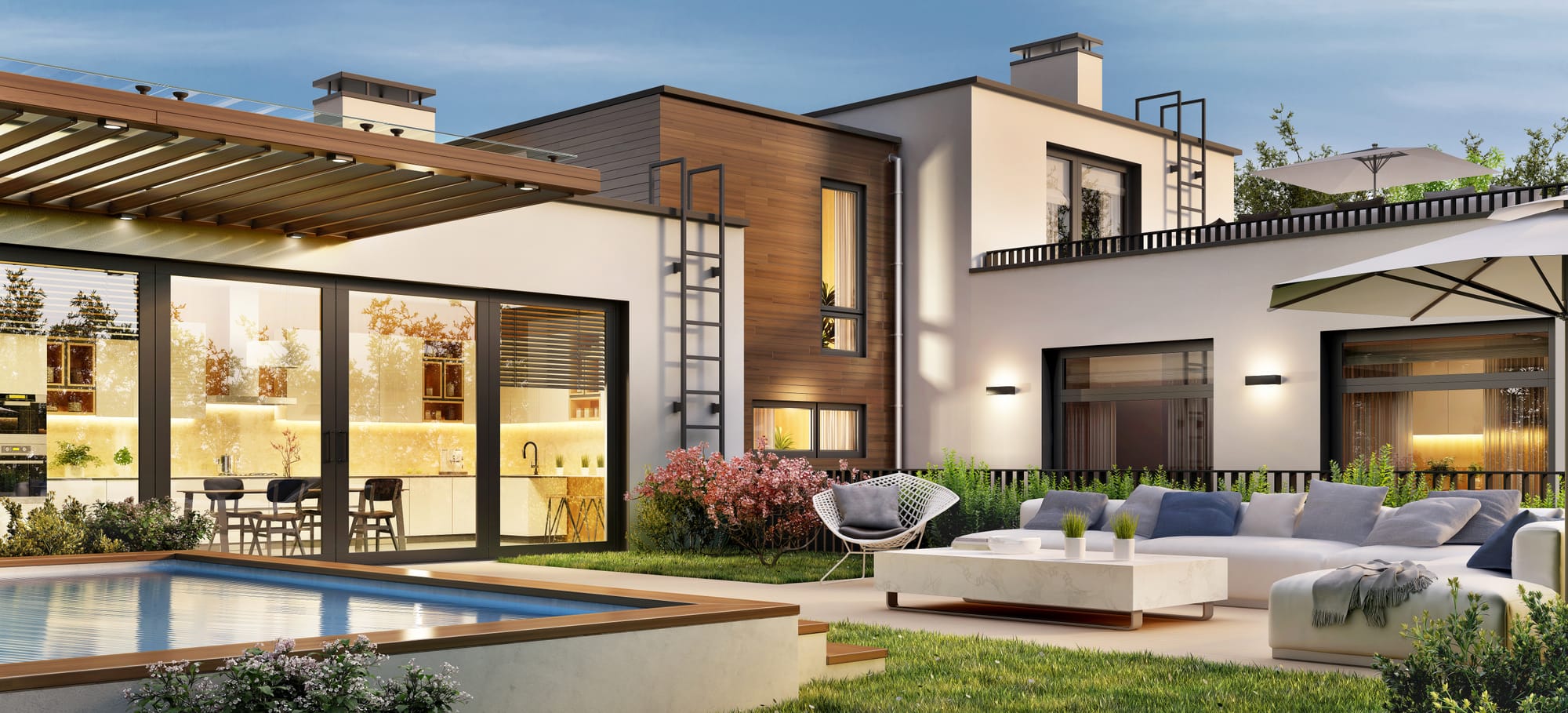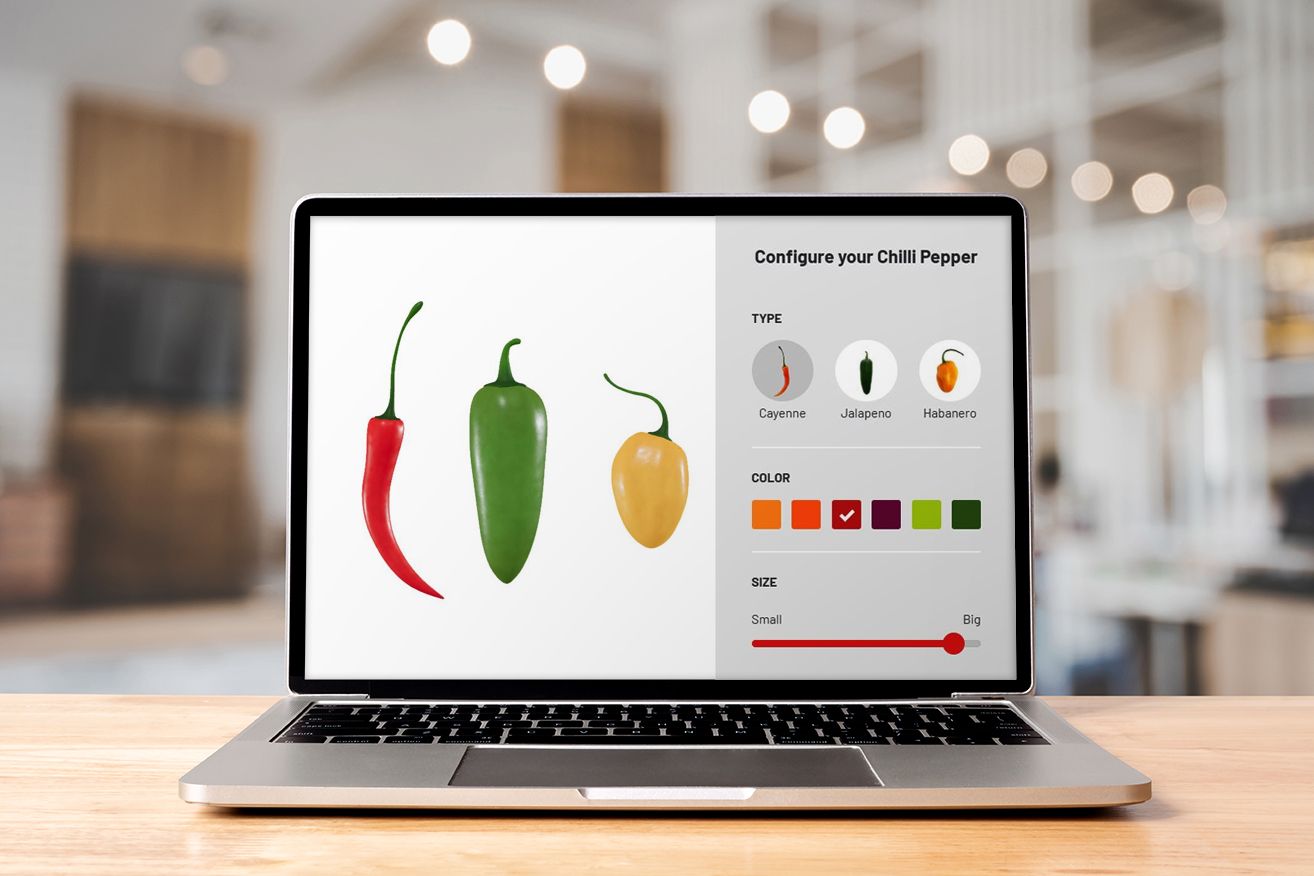Future Trends Defining Home and Outdoor Design – What Manufacturers Need to Know
In this article, we explore and discuss the innovative future trends shaping home and outdoor design, emphasizing a more interconnected and humane approach to living spaces.

Home and outdoor living design is not merely about aesthetics; it's a dynamic field that resonates with contemporary culture, technological advances, and socio-economic trends. For manufacturers, understanding these trends is crucial for strategic planning and innovation. This article will delve into these trends, offering insights, statistics, and examples that could guide decision-making in the industry.
The Trends
Elegant Transition: Ombre Paving, Textured Tiles & Mixing Materials
The trend towards ombre paving, textured tiles, and mixing materials extends beyond the mere aesthetics of surfaces. It introduces layers of sensory experiences and reflects the increasing desire for uniqueness and personal expression. The ombre effect, with its gradual transition of color, can create serene environments, while textured tiles add tactile richness. Mixing various materials like wood with metal or glass with fabric infuses interiors and exteriors with complexity and character, allowing designers to craft spaces that are both visually stimulating and emotionally resonant.
Bold Maximalism
Maximalism goes beyond simple decoration; it's a celebration of life, expression, and diversity. This movement toward intricate designs and vibrant colors can be seen as a response to the sanitized simplicity of minimalism. By encouraging bold choices in patterns, colors, and textures, maximalism embraces a sense of joy, complexity, and individuality. It's a trend that invites personal exploration, allowing homeowners to create spaces that are rich in meaning, texture, and visual interest.
Geometric Spaces: Reshaping the Living Experience
Geometric design is about more than symmetry and shape; it's about challenging the conventional and embracing the unexpected. By employing various geometric forms like hexagons, triangles, or asymmetric shapes, spaces can be transformed into dynamic environments that encourage movement, interaction, and exploration. Geometric design can be implemented in flooring, wall patterns, garden layouts, and even furniture. It’s a trend that adds visual tension and innovation, creating an environment that is modern, exciting, and engaging.
Sustainability and Eco-Friendly Choices
The commitment to sustainability is a powerful trend shaping every aspect of design. From construction materials to energy usage, there’s a growing emphasis on responsible choices that minimize environmental impact. This includes using reclaimed or recycled materials, prioritizing energy-efficient appliances, water-saving landscaping, and more. The trend is also influencing aesthetics, with natural materials and earth-toned palettes becoming popular. This commitment to sustainability reflects a broader societal shift towards environmental stewardship and presents an opportunity for manufacturers to align their products with values that are becoming increasingly important to consumers.
Seamless Integration of Outdoor and Indoor Living Spaces
The integration of outdoor and indoor spaces represents a rethinking of how we live and interact with our surroundings. By creating a seamless flow between indoor comfort and outdoor beauty, this trend encourages a closer connection with nature and a more flexible use of space. It's not just about large windows or sliding doors but about a coherent design language that binds the interior and exterior. This might include consistent flooring materials, shared color themes, or complementary furniture styles. It's a trend that speaks to a desire for openness, connection, and harmony with the environment.
Smart Technology and Home Automation
The integration of smart technology is revolutionizing the way we interact with our homes. From lighting that adjusts to our moods to intelligent systems that learn our preferences, technology is becoming an invisible but essential part of our living spaces. This trend goes beyond convenience, reflecting a new way of living where technology enhances our well-being, security, and even social connections. With advances in artificial intelligence and the Internet of Things, the smart home of the future will be a responsive, adaptive environment that aligns with our needs and desires.
Urbanization and Space Optimization
Urban living is demanding innovative solutions for space optimization. As cities grow denser, there's a need to make the most of limited space without sacrificing quality of life. This has led to the rise of multi-functional furniture, vertical gardens, and modular design. Even small balconies or terraces are being transformed into lush gardens or outdoor dining areas. This trend is about creativity, adaptability, and the intelligent use of space, allowing urban dwellers to enjoy a rich and fulfilling lifestyle within compact living environments.
Well-being, Lifestyle Adaptations, and Wellness Design
Wellness design is not just a style; it's a philosophy that places human well-being at the center of architectural and interior decisions. This includes everything from the selection of non-toxic materials to the incorporation of natural light, air purification systems, ergonomic furniture, and calming color palettes. The trend also extends outdoors, with the design of spaces for meditation, exercise, or simply relaxation. It's a holistic approach that recognizes the profound impact our surroundings have on our physical and mental health, and it calls for a design that nurtures rather than neglects our well-being.
Customization and Personalization
The desire for customization and personalization reflects a shift towards consumer empowerment and individual expression. Technology is enabling this trend, with tools like 3D configurators allowing consumers to tailor products to their preferences. This extends from customized furniture to personalized garden layouts, enabling people to create environments that are uniquely theirs. It's a trend that offers exciting opportunities for manufacturers and retailers but also challenges them to rethink production, sales, and marketing strategies.

Innovative Ground Solutions
Ground solutions are no longer merely functional; they are becoming central to the aesthetic and sensory experience of a space. Whether it's heated pavements for winter comfort, monochromatic pavers that create graphic patterns, or grass inserts that soften a driveway, ground solutions are becoming versatile design elements. By exploring different materials, shapes, and textures, manufacturers and designers can offer innovative solutions that contribute to the overall coherence and uniqueness of a space.
Revival of Classic Trends: Basket Weave and Art Deco
The return of classic design elements like basket weave and Art Deco signifies a renewed appreciation for craftsmanship, history, and timeless elegance. These elements can infuse spaces with a sense of tradition, luxury, and identity. From intricate weave patterns in furniture to bold Art Deco architectural details, these revived trends connect the present with the past, adding layers of meaning and beauty.
Commitment to Community and Shared Spaces
As cities continue to expand and urban living becomes the norm for many, there is a growing emphasis on community spaces and shared amenities. Creating communal gardens, rooftop terraces, or shared entertainment areas fosters a sense of connection and encourages social interaction. It reflects a shift towards viewing the home not just as an isolated unit but as part of a larger, interconnected community. This trend is likely to influence urban planning, architectural design, and even the way we think about ownership and access to resources.
Adaptive Reuse and Historical Preservation
Adaptive reuse and historical preservation are increasingly being recognized for their value both culturally and environmentally. By repurposing existing structures or preserving historical elements, designers are connecting spaces with local history, culture, and identity. It's not just about nostalgia but about sustainable practices, celebrating heritage, and creating spaces that have depth and context. This approach respects the past while innovating for the future, making it a rich field for exploration and creativity.
Emphasis on Accessibility and Universal Design
Universal design and accessibility are becoming integral to the way we conceive of and create spaces. It's about designing environments that can be accessed, understood, and used to the greatest extent possible by all people, regardless of age, size, or disability. This includes everything from wheelchair-accessible outdoor areas to user-friendly smart home systems. By placing human diversity at the heart of design, this trend is making inclusivity a standard practice, not just a special requirement.
The Rise of Biophilic Design
Biophilic design goes beyond adding a few plants; it's about creating environments that connect people with nature on various levels. Incorporating natural materials, daylight, vegetation, water features, and even the use of natural forms and patterns can create spaces that boost well-being, productivity, and creativity. The integration of nature within architectural design is not just aesthetically pleasing but has been shown to reduce stress, enhance cognitive function, and improve mood. It’s a trend that reflects a deepening understanding of our intrinsic connection to the natural world.
Experience-Driven Spaces
The growing emphasis on experiences over possessions is translating into a focus on spaces that enable and enhance specific activities or sensations. Whether it's a garden designed for meditation, a kitchen optimized for social cooking, or a living room that doubles as an art studio, the design is increasingly centered on supporting and enriching the human experience. This trend is about understanding the nuanced ways in which spaces affect us and using that understanding to create environments that truly resonate with how we live, work, and play.
Future Directions:
These future trends mark a significant evolution in home and outdoor design, pointing towards a more humane, conscious, and interconnected approach. Designers, architects, manufacturers, and homeowners are all part of this dynamic landscape, each contributing to the shaping of spaces that reflect our evolving values, aspirations, and understanding of what it means to dwell. The future of design is not just about appearance but about substance, purpose, and the profound ways in which our surroundings can enhance our lives. It's an exciting time for the industry, filled with opportunities for innovation, collaboration, and meaningful contributions to the way we live and interact with our world.


